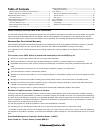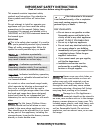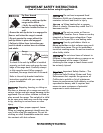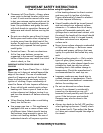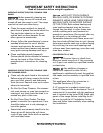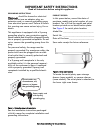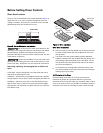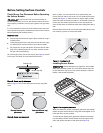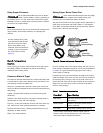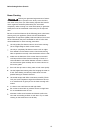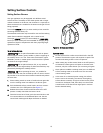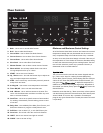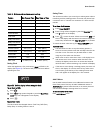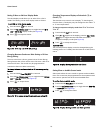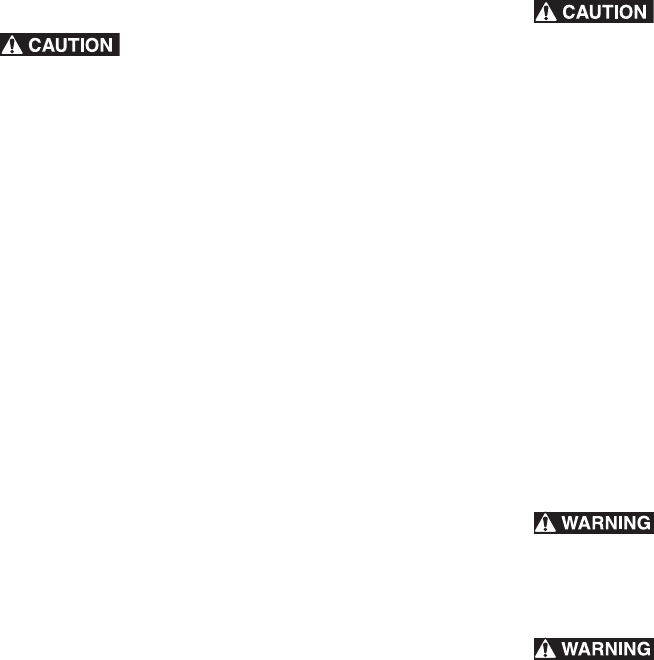
IMPORTANT SAFETY INSTRUCTIONS
Read all instructions before using this appliance.
Save these instructions for future reference.
7
IMPORTANT INSTRUCTIONS FOR CLEANING YOUR
RANGE
Before manually cleaning any
part of the range, be sure all controls are
turned off and the range is cool. The range
may be hot and can cause burns.
• Clean the range regularly to keep all
parts free of grease that could catch fire.
Pay particular attention to the area
around each surface element. Do not
allow grease to accumulate.
• Always follow the manufacturer’s recom-
mended directions for use of kitchen
cleaners and aerosols. Be aware that
excess residue from cleaners and aerosols
may ignite causing damage and injury.
• Clean ventilating hoods frequently.
Grease should not be allowed to accumu-
late on the hood or filter. Follow the
manufacturer’s instructions for cleaning
hoods.
IMPORTANT INSTRUCTIONS FOR CLEANING YOUR
SELF-CLEANING OVENS
• Clean only the parts listed in this manual.
Before using self-clean, remove the broiler
pan, any food, utensils, and bakeware
from the oven. Remove oven racks unless
otherwise instructed.
• Do Not Use Oven Cleaners. No commer-
cial oven cleaner or oven liner protective
coating of any kind should be used in or
around any part of the oven.
• Do Not Clean Door Gasket. The door
gasket is essential for a good seal. Care
should be taken not to rub, damage, or
move the gasket.
• Some birds are extremely sensitive to the
fumes given off during the self-clean
cycle of any oven. Move birds to another
well-ventilated room.
DO NOT TOUCH SURFACE
HEATING UNITS, OR SURFACE COOKING
ELEMENTS, AREAS NEAR THESE SURFACE
HEATING UNITS, OR INTERIOR SURFACE
OF THE OVEN. Both surface heating and
oven heating elements may be hot even
though they are dark in color. Areas near
surface cooking units may become hot
enough to cause burns. During and after use,
do not touch, or let clothing or other
flammable materials touch these areas until
they have had sufficient time to cool. Among
these areas are the cook top, surfaces facing
the cook top, the oven vent openings and
surfaces near these openings, oven door and
oven door window.
CONVERSION TO L.P. GAS
Personal injury or death from
electrical shock may occur if the conversion
to L.P. gas is not made by a qualified installer
or electrician.
Any additions, changes or
conversions required in order for this
appliance to satisfactorily meet the applica-
tion needs must be made by a qualified tech-
nician.
This appliance allows for conversion to
Liquefied Petroleum (L.P.) Gas.
If L.P. conversion is needed, contact your
local L.P. Gas provider for assistance. The L.P.
conversion kit is provided with this appliance
and is located on the lower REAR (back side)
panel of the range. Before installing the kit
be sure to read the L.P. Installation Instruc-
tions and follow them carefully when making
the installation.




